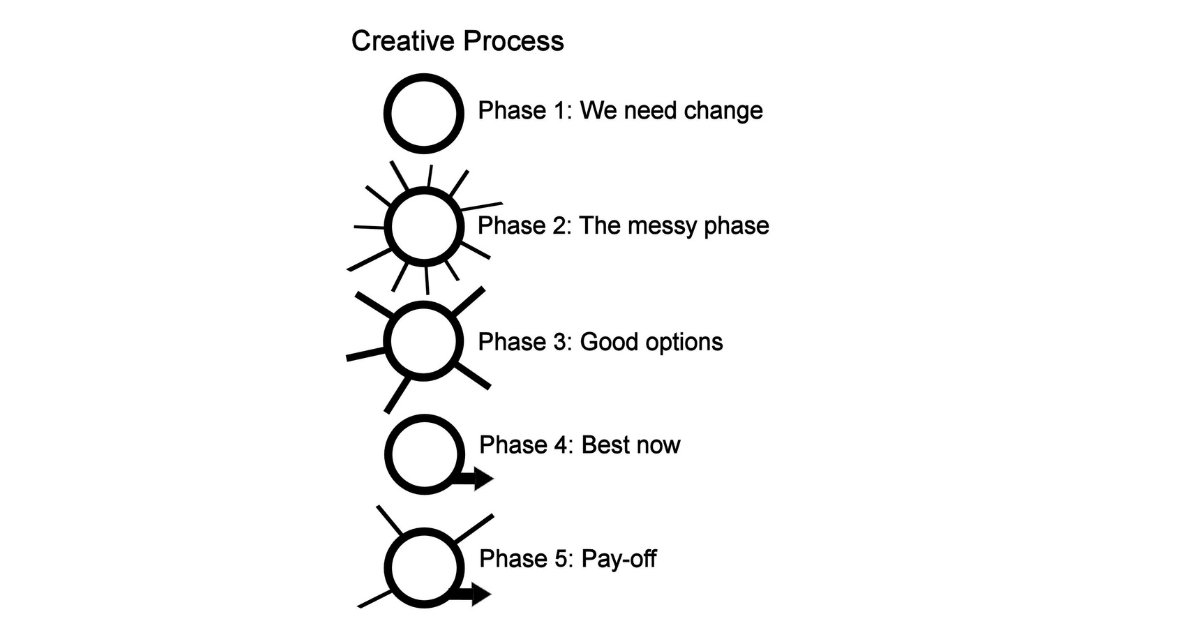
Why You Want Your Decision Process to be Messy
Good decision-making is messy–sometimes. This illustration show you how good decision-making moves from neat to messy back to order.
In a quality decision process, you move from recognizing you need change and having no or few ideas or solutions (1) to a messy collection of ideas (2). Once you organize the ideas into a set of realistic possibilities (3), you are ready to evaluate each alternative to find the best solution to create the change sought (4). One residual benefit of good decision-making is that you created other vetted options to apply elsewhere (5).
Phases
1. We need change. You start with the recognition that you need to change.
2. The messy phase. You invest effort to develop a large set of options or solutions. You discover many ways to proceed.
3. Good options. You investigate and organize your options into categories. You discover a handful of options that offer real promise.
4. Best now. You select one option now because of its great fit, the opportunities, and your skills. You proceed with confidence, enriched by what you learned in your investigation.
5. Pay-off. As you proceed with your selected option, you discover ways to incorporate the good ideas you didn’t select. You use some of these other options or the ideas behind them to improve your operation.
You can keep up with me. Subscribe to my newsletter, Karen’s CEO Solutions.
Karen Eber Davis is a nonprofit strategic planning consultant who works with visionary leaders committed to taking their organizations to new heights. She offers customized strategies, assessments, and coaching designed to help leaders lead their organizations to achieve their potential. She is the author of 7 Nonprofit Income Streams and Let's Raise Nonprofit Millions Together.
Categories
If you appreciate these Added Value posts, please consider subscribing.
Latest Posts
- How New Nonprofit CEOs Secure Board Buy-In for Strategic Planning
- How Nonprofit Leader Navigate Crisis with Clarity & Confidence
- One Way AI Can Help You Find a Path Where None Exists
- In Crisis? Resist Cutting Your Ability to Make Income
- Nonprofit Strategic Planning Assessment: 10 Questions About Your Strategy
